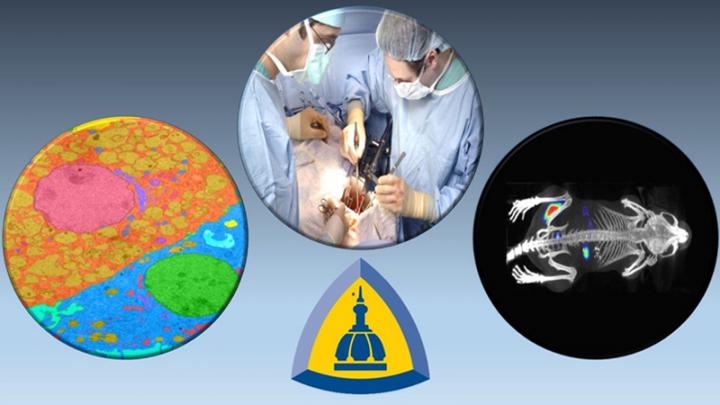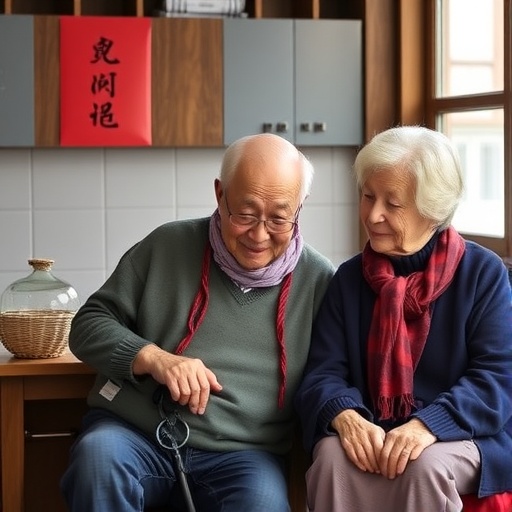
Credit: Johns Hopkins Medicine
Eating a Late Meal May Be Harmful To Your Metabolic Health, Particularly For Early Birds
Media Contact: Vanessa McMains, [email protected]
People have anecdotally claimed that the timing of a meal may affect metabolism, but there isn’t much solid evidence in support. To see how timing of eating influences metabolism, Johns Hopkins Medicine researchers studied 20 healthy volunteers by giving them a meal at a traditional hour (6 p.m.) or a meal at a later time of the day (10 p.m.). They found that when people ate later, they had higher spikes in blood sugar, slower fat breakdown and even increases in the stress hormone cortisol, believed to be a factor in promoting weight gain. When they looked more closely at different responses to the late meal, they found that people who normally went to bed early — so-called “early birds” — experienced an even bigger impact from eating late.
In their findings published on June 11, 2020, in the Journal of Clinical Endocrinology & Metabolism, the researchers say eating late could promote obesity if these conditions happen often enough.
“What time you eat could be just as important as what you eat when it comes to metabolic health,” says Jonathan Jun, M.D., associate professor of medicine at the Johns Hopkins University School of Medicine. “When people eat identical meals at two different times, their bodies apparently process those calories differently. How an individual responds depends on their particular biorhythms and sleep behaviors.”
For the study, each participant was given a “routine-time” dinner at 6 p.m. or a late dinner at 10 p.m., and drank a beverage containing a non-radioactive tracer that allowed the researchers to follow fat burning in the body. All participants went to bed at 11 p.m. Each participant had an intravenous line, which allowed researchers to take blood samples during the day and overnight without interrupting or waking them.
Just after a late dinner, participants had on average an 18% higher blood sugar spike and a 5% increase in cortisol levels. Furthermore, the fat in the late meal burned slower, resulting in a 10% reduction in fat breakdown by the next morning.
The researchers then looked at how each participant’s body responded to the late meal based on their normal habits or daily rhythms. Among the “early birds,” who were accustomed to an 11 p.m. bedtime, blood sugar levels rose 30% higher while the fat in their meals burned 20% less by the next morning.
The people who typically went to bed between 2 a.m. and 3 a.m. — the so-called “night owls” — were barely affected by the late meal.
Because they only looked at what happens after eating one late meal, the researchers say they aren’t sure if continually eating late will eventually allow the body to adapt. They also say it’s unclear if this slower metabolism after a late meal is caused by how soon a person goes to sleep after they eat, or if it results from each person’s natural variations in metabolism over a 24-hour period (their circadian rhythm).
The researchers plan to investigate these concepts in future studies.
Study Says Women Underrepresented As Leaders in Academic Hospital Medicine Programs
Media Contact: Marin Hedin, [email protected]
In recent years, the number of women who entered U.S. medical school surpassed the number of men. But gender inequities still exist in many areas of medicine, Johns Hopkins researchers report in a paper published March 3, 2020, in the Journal of General Internal Medicine. Of academic hospital medicine programs, the report states, 79% are run by men and male hospitalist leaders are more likely to have attained the rank of full professor than women leaders.
“Despite making a number of strides in medicine when it comes to gender bias, this is an area where we still haven’t reached full equality,” says Carrie Herzke, M.D., assistant professor of medicine and associate vice chair for clinical affairs in the Department of Medicine at the Johns Hopkins University School of Medicine.
For the study, which was done in collaboration with the Society of Hospital Medicine, Herzke and her colleagues conducted a survey of all U.S. academic hospital programs associated with the Association of American Medical Colleges. After identifying 135 programs, surveys were sent electronically to academic hospitalist leaders at each one. Questions asked about the leader’s gender, the program’s size and organization, faculty characteristics, and perceptions about promotion and faculty development.
Of the 135 programs, 80 (59%) responded to the survey. The data showed that these programs did not differ significantly from nonresponding programs in terms of funding, region, age or type of institution. However, while the programs reported approximately equal numbers of male and female faculty members, 79% of their directors were male. Moreover, 37% of male hospitalist leaders were full professors, while no female hospitalist leaders held that rank.
Herzke and her colleagues plan more research to look at promotion and faculty development in academic hospital medicine. Also, they plan similar studies to understand if there are issues with racial inequity among leadership in academic hospital medicine. This topic in particular, says Herzke, is incredibly important to evaluate and, if inequality exists, address.
Immune Cells Hampered When Fighting Soft Tissue and Bone Sarcomas
Media Contact: Valerie Mehl, [email protected]
Immunotherapies such as checkpoint inhibitors that enhance the body’s natural ability to fight cancer have been only minimally successful in treating sarcomas — rare cancers that grow in the soft tissues and bones. In a new study, Johns Hopkins Kimmel Cancer Center researchers have teased out the tumor microenvironment in these cancers to look for reasons why.
The work was published online on June 16, 2020, in the journal Clinical Cancer Research.
Studying human samples from two types of soft tissue cancers — rhabdomyosarcomas and undifferentiated pleomorphic sarcomas (UPS) — with different genetic underpinnings and responses to immunotherapy, investigators discovered that both tumor types were ripe with tumor-associated macrophages (TAMs). Heavily involved in promoting tumor initiation and growth, TAMs hamper the proper immune reaction against tumors. Additionally, both sarcomas had similar amounts of CD8+ T lymphocytes (CD 8+ T cells, also known as “killer T cells”), immune system cells that protect the body from infection and are believed to be among the front-line soldiers in the fight against cancers.
In their study, the researchers discovered that where the CD8+ T cells congregated and how their antitumor functions were impeded by TAMs differed in the two sarcomas.
In UPS, the researchers found that the tumors themselves were filled with TAMs and CD8+ T cells. With constant stimulation by tumor antigens, CD8+ cells produce large amounts of PD-1, a protein that eventually exhausts the T cell population. When this happens, the researchers suggest, and TAMs control the environment, normal T cell activity against the cancer is suppressed.
In rhabdomyosarcomas, the researchers found CD8+T cells only within tiny aggregates of immune cells called tertiary lymphoid structures (TLSs). TLSs are known to play a major role in initiating antitumor immune responses, helping the immune system recognize cancer cells as targets.
“Our working theory is that TAMs around the TLSs restrain them from deploying the T cells they contain into the surrounding tumor tissue,” says senior study author and pediatric hematologist-oncologist Nicolas Llosa, M.D., assistant professor of oncology at the Johns Hopkins University School of Medicine.
Llosa says the study findings suggest that for UPS and rhabdomyosarcoma, targeting and shutting down TAMs and in turn, restoring the activity of fully potent, cancer-fighting T cells on tumors, may be the key to achieving a positive outcome against this disease.
“We are really trying to learn as much as we can about the granular details of immune cell interactions in sarcomas,” Llosa says. “This is a rare subset of patients who are in desperate need of new treatments. The therapies for sarcomas have not changed in the past four decades.”
Immunotherapy has had limited success in treating some sarcomas, he says, but no effect so far for UPS and rhabdomyosarcoma.
“The basis of successful immunotherapy lies in the ability of the immune system to recognize cancer as foreign and attack, and is dependent on genetics, host and environmental factors, and makeup of the tumor microenvironment,” says Llosa. “We need to understand the immune niche that sustains these tumors and how it supports tolerance, so we can determine what drug targets could be used to help mount a better response.”
###
Media Contact
JHMedia
[email protected]
Original Source
https:/




